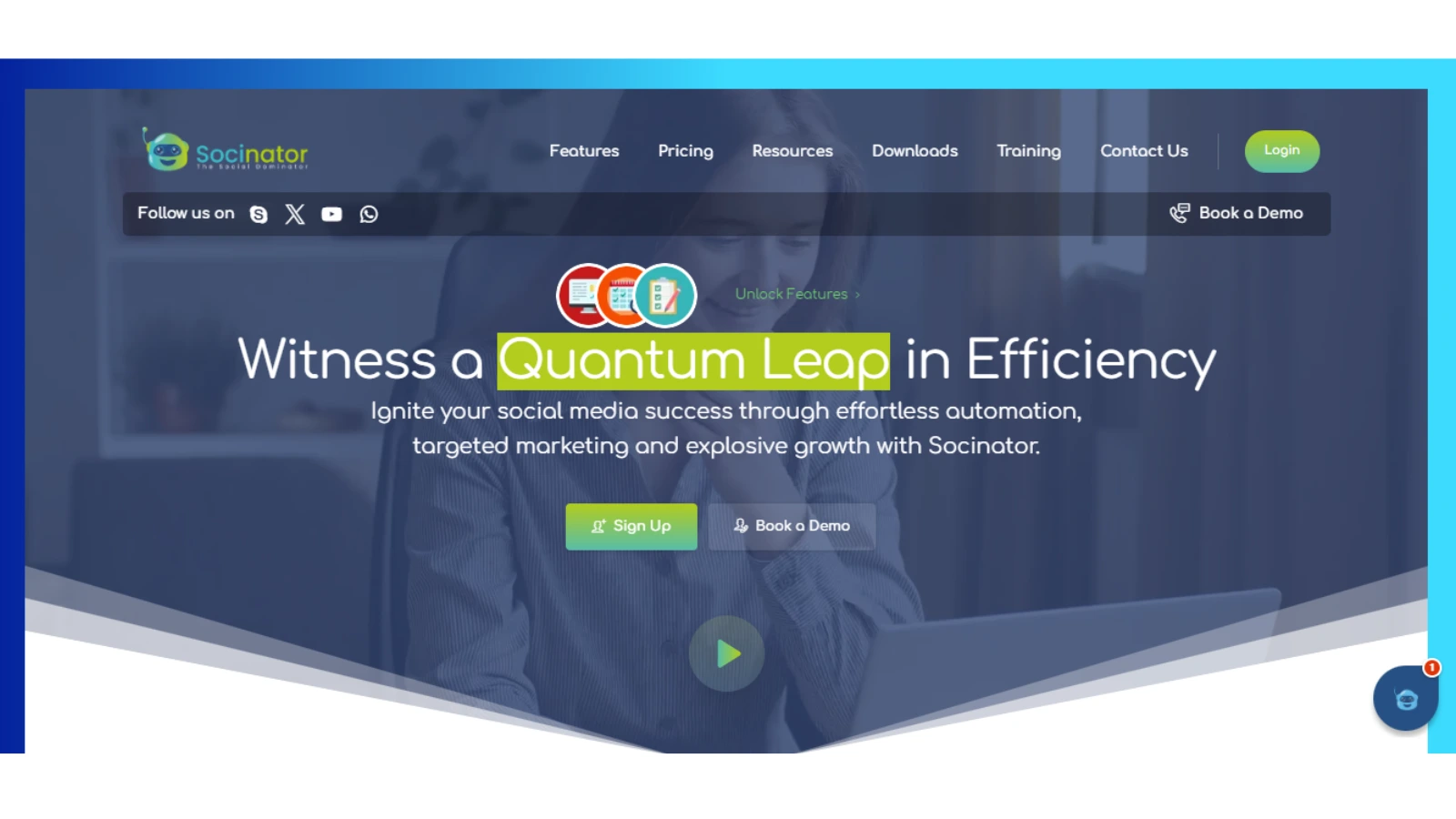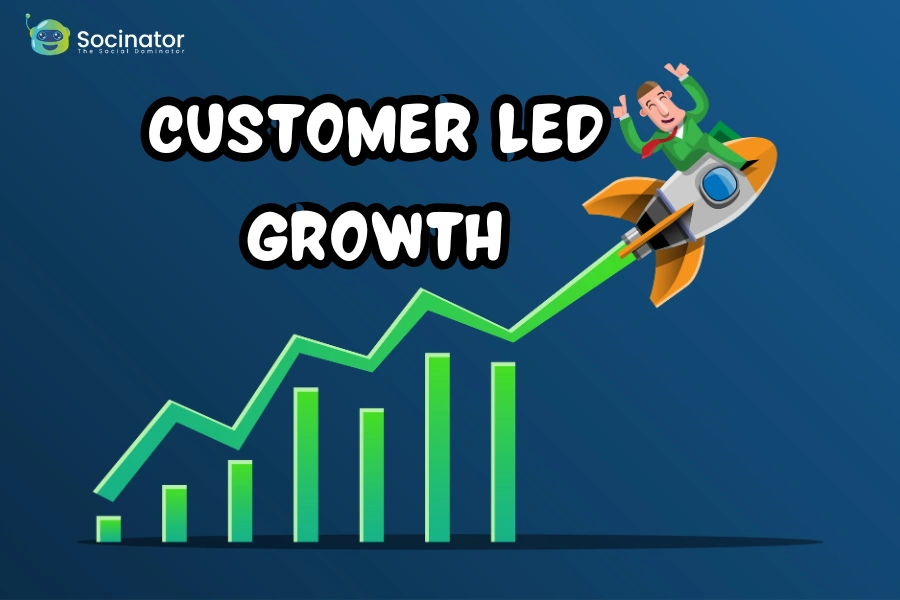To be successful in business today, you must understand your customers and market trends. Social media has become a treasure trove of valuable insights, offering a window into customer behavior, competitor strategies, and emerging trends. By harnessing the power of social business intelligence, businesses can unlock these insights to make informed decisions and drive growth.
From monitoring brand mentions to identifying influencers and analyzing customer sentiment, social business intelligence provides a roadmap for navigating the ever-evolving landscape of social media.
Let us explore how businesses can leverage social data to gain a competitive edge and achieve their goals.
But before diving into the intricacies of social BI, let us first understand what it is.
Hit ‘Play’ Button & Tune Into The Blog!
What Is Social Business Intelligence?
Social business intelligence (SBI) is a way for companies to use information from social media platforms like Facebook and Twitter to make their products, operations, and plans better. It means gathering lots of social media data, studying it, and using what’s learned to make improvements.
Its goal is to enhance data comprehension and user comfort with analytical tools, facilitate informed decision-making, and foster a common understanding among users. A key aspect of social BI is empowering users to independently generate and share reports and data without relying on data experts or IT support.
This approach promotes a culture of data sharing and analysis across teams and departments, aiming to enhance outcomes in various areas such as product development, project management, business processes, and quality assurance.
Accumulation of social media data is also a vital aspect of business social media intelligence. Let us learn how.
How To Fetch Social Media Data:

If you want to tap into the vast pool of insights from social media, you might wonder how to collect this data efficiently. Considering social media’s role in internet usage, collecting data on these platforms is challenging. Depending on your organization’s size and resources, there are different approaches.
Examining data by hand in the insights or analytics areas of your social media accounts is one approach. However, this can be time-consuming and complex due to varying platform interfaces. It might not be feasible unless you employ people specifically for social media management.
Alternatively, business intelligence (BI) software offers integration capabilities, seamlessly incorporating social media data into existing BI dashboards. It allows analysis of social media engagement alongside other key metrics like sales and productivity. Many BI platforms have user-friendly interfaces, enabling easy interaction with all data without complex data handling.
While direct integration with social media platforms isn’t universally available yet, most BI tools offer this feature to simplify the process. Given the importance of social media data, especially for B2C businesses, it’s crucial to consider this when selecting a BI solution.
Key Metrics of Social Media Data Collection:
Similar to sifting through sediment for valuable gold nuggets, not all data that enters your collection process will be worthy. To effectively gather pertinent information, it’s essential to pinpoint the key performance indicators (KPIs) that align with your objectives and priorities.
Several crucial metrics for social media data gathering include:
- Follower or social media pages like count
- Responsiveness rate
- Audience demographics and location
- Reach of posts
- User engagement with posts
- Comment count
- Mentions received
- Retweets
- Shares
- Likes on posts
- Active follower count
- Website generated traffic
By utilizing these metrics, you can derive several insights from fundamental data even before exploring the deeper insights that social business intelligence (BI) can provide.
It is important to analyze your post engagements and keep a visible presence in your social media platforms. But, it is also vital to continuously engage with your audience and have an effective customer engagement strategy. Keeping a positive presence felt throughout your social media platforms can also assist in improving your engagement.
If you are worried about low rates of engagement on your social media posts, let me tell you about a wonderful automation tool that can help you boost engagement on all your social media platforms.
The tool is Socinator, which assists you in increasing your presence throughout all the platforms through automation.
Using this tool, you can spend more time crafting creative content ideas rather than spending time on manual tasks like commenting on posts, interacting with your followers, and posting at regular intervals.
Let us learn about this tool in brief.
Socinator- The Automation Tool To Elevate Your Social Media Presence
 Socinator is a comprehensive social networking automation platform offering extensive statistics and reports for analyzing social media activities. With its analytics features, users can effortlessly track key engagement metrics such as comments, likes, shares, and other interactions.
Socinator is a comprehensive social networking automation platform offering extensive statistics and reports for analyzing social media activities. With its analytics features, users can effortlessly track key engagement metrics such as comments, likes, shares, and other interactions.
This feature-rich platform empowers users to gain deep insights into their social media performance and optimize their strategies accordingly. This tool has many features that can positively impact your social media presence.
Some of these features that will help business to engage with their audience are:
-
Automated posting and scheduling:
The tool facilitates automatic publishing and scheduling of posts across various platforms like Instagram, Twitter, Facebook, Google+, and LinkedIn simultaneously.
-
Automated interaction with likes, comments & followbacks:
It automates engagement with likes and comments. It also automates follows and unfollows accounts related to your social media account.
-
Activity Statistics And Reports:
Socinator offers comprehensive stats and reports on your social network activities, aiding in analysis and the development of more effective marketing plans.
-
Broadcast Messages:
The tool automates broadcast messages without you needing to do it manually. It helps in saving a lot of time.
-
Auto Reply:
Socinator increases engagement by replying to messages automatically. It gives relevant replies to queries and enables you to move on with your creative creations without having to worry about replying to each and every message.
Analyze Performance:
The Socinator analyzes performance by tracking metrics such as engagement rates, follower growth, and post reach. It also provides insights into audience demographics and behavior to improve social media strategies.
With these features, social media automation becomes very easy and feasible. There are many other beneficial features of using social media automation tools for businesses.
Some of them are:
- Access multiple social media platforms from a single interface.
- Plan, collaborate, and schedule posts in advance.
- Monitor detailed analytics to measure social media effectiveness.
- Boost social engagement effortlessly.
- Utilize an effective content calendar.
- Automate posting tasks to streamline workflow and save time.
Try out this tool and experience the freedom of creating valuable content for all your social media platforms without wasting time on each post and comment.
Now that we have learned about this automation tool- let us return to our topic and learn how you can leverage social business intelligence for the success of your business.
Leverage Social Business Intelligence For Successful Business:

Imagine a scenario where business users have access to a Business Intelligence (BI) portal, where they can view popular data, rate, share, and comment. This sharing mechanism optimizes resource utilization by enabling users to access relevant reports, dashboards, and data to fulfill tasks or analyses efficiently.
Integrating social media and networking features within the BI environment allows users to engage in discussions, share insights, and learn from one another.
As Social BI permeates the organization, it fosters the development of power users who approach data analysis creatively and insightfully. Similar to how social media users interact with posts by liking or sharing them, a social BI tool facilitates collaboration, sharing, and learning within the organization.
As power users emerge and data sharing becomes more prevalent, regular business users gain a deeper understanding of analytics and become more adept at utilizing BI tools, ultimately leading to improved user adoption across the organization.
Social BI revolutionizes data utilization in organizations. It involves analyzing and sharing data through interactive tools, boosting user confidence in analytics. Users can access, rate, and share popular data, streamlining tasks.
This trend fosters power users and collaborative decision-making. Social BI helps identify valuable data, guiding provision, and presentation for better decision-making. Overall, it enhances BI tool adoption and resource optimization.
Also, it is vital to learn where social business intelligence gathers data from. Let us understand it.
Also Read:
Social Media Automation Explained: Why You Need It
How to Develop An Effective Customer Engagement Strategy For Social Media
Where Does Social BI Gather Data From?

Social BI systems gather data from various sources:
- Engagement metrics show how people interact with a brand’s social media content, helping gauge public opinion and trends.
- Content analytics measure the performance of different themes and media types on social media, aiding in assessing marketing strategies and campaigns.
- Social listening data allows monitoring conversations on social media, helping understand topics and opportunities for company participation.
With data from diverse sources, Social BI generates large amounts of information.
From all the above data, we can understand that social business intelligence assists businesses in many ways. However, two major factors aid businesses when they leverage social business intelligence.
They are:
Evaluate Customer Feelings Through Social Business Intelligence:

Do your customers generally have positive, negative, or neutral opinions about your company and its products or services? Has your perception changed with time, and if so, when and why?
Social BI solutions can help you better understand how both current and potential customers view your company and its offerings. These tools can also help identify trends and pinpoint significant changes in sentiment over time.
Based on this information, you can determine which actions impact customer satisfaction highly. You can enhance customer sentiment and engagement by amplifying positive experiences and addressing negative ones promptly.
Establish And Nurture Customer Connections Utilizing Social Business Intelligence:
Are your customers often unhappy with your company, products, or services? Do they praise the features and benefits?
With social BI, you can closely monitor consumer comments, even if they don’t explicitly mention your brand. It allows you to listen to discussions about your brand, engage in conversations, and respond effectively to strengthen customer relationships.
These insights can guide improvements in your customer service strategy and help you enhance your products and services to meet consumer needs more effectively.
Wrapping Words:
In conclusion, as Social BI gains traction in enterprises, it cultivates proficient power users adept at innovative data analysis. Similar to social media interactions, Social BI platforms facilitate collaboration, sharing, and learning among users, fostering analytics proficiency.
With increased data sharing and user adoption, organizations harness Social BI’s importance in understanding customers, market trends, and competition. Leveraging social media data enables informed decisions, drives growth, and strengthens customer relationships.
Tools like Socinator streamline data collection, while Social BI platforms promote collaborative insights, enhancing data-driven decision-making and business outcomes.






